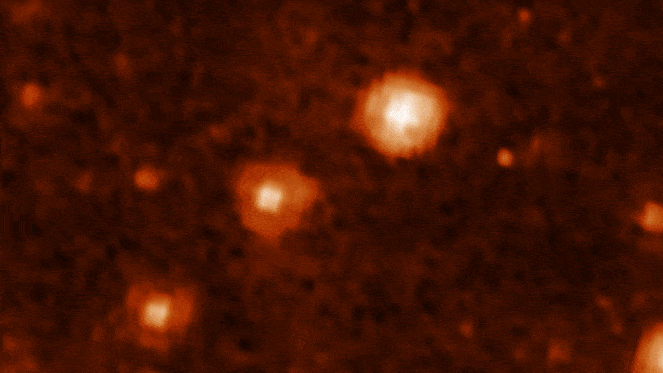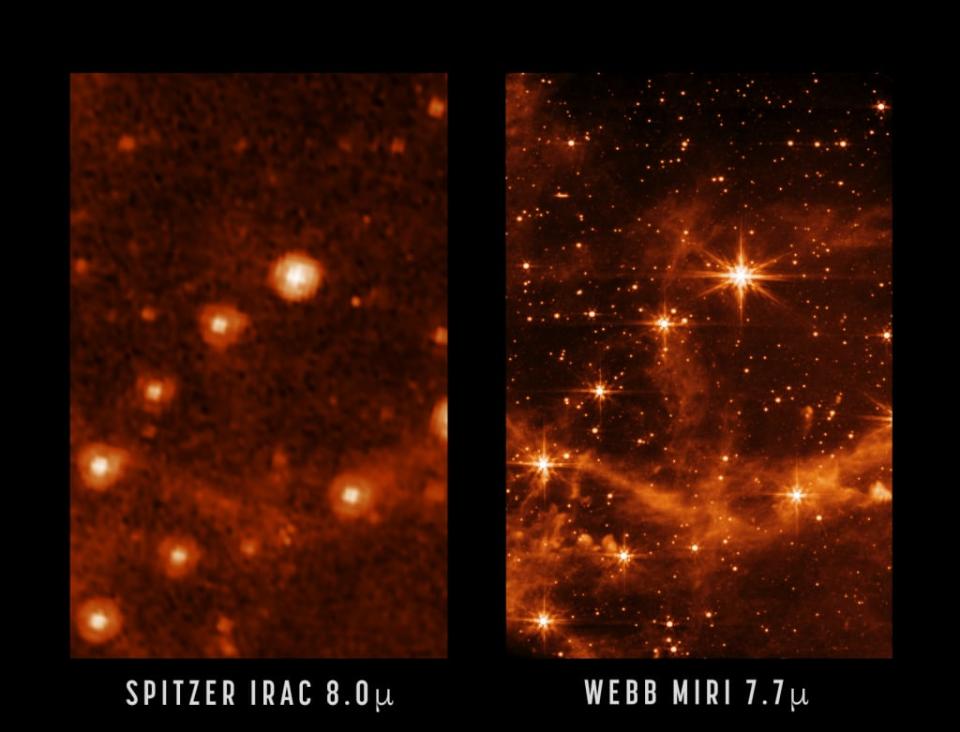NASA Drops Stunning New Photo From Its Most Powerful Space Telescope

The James Webb Space Telescope (JWST)—NASA’s powerful new orbital observatory launched last December—continues to dazzle. The agency released a new photo from the orbital observatory on Monday that showcases the JWST’s pristine imaging capabilities—a taste of the kind of science we can expect the instrument to deliver in full-force soon.
Specifically, the image is a test photo of the Large Magellanic Cloud, a satellite galaxy of our Milky Way. This was captured by Webb's coldest instrument: the Mid-Infrared Instrument (MIRI), armed with a sensitive camera used to detect mid-infrared light. When compared to a previous photo of the Large Magellanic Cloud taken by the now-retired Spitzer Space Telescope, the difference is night and day. Whereas the Spitzer image is splotchy and burry, the MIRI image offers a clear and near-immaculate view of the galaxy.

The difference between the Spitzer's image of the Largellanic Cloud on the left, and the James Webb Space Telescope's on the right.
The MIRI image also shows the interstellar gas from the galaxy in razor-sharp detail. NASA wrote in a blog post that you can also spot emissions from “polycyclic aromatic hydrocarbons,” which is science speak for the molecules from carbon and hydrogen that make up the interstellar gas. It’s truly astonishing—and just a taste of the insights researchers believe the JWST will soon be able to provide about the birth of stars and the origins of planetary systems.
The new image marks the completion of the Webb’s incredibly precise and delicate alignment process across four of its main instruments: the Near-Infrared Camera, which can pick up infrared images; the Near-Infrared Spectrometer, which reveals the physical properties of an object such as temperature, mass, and chemical composition; the Near-Infrared Imager and Slitless Spectrometer, which will be used to find exoplanets; and the Fine Guidance Sensor, which allows the Webb to point itself in the right direction; and the MIRI. Now that this step is finished, engineers will now begin testing the instruments with the goal of beginning formal observations this summer.
“I’m delighted to report that the telescope alignment has been completed with performance even better than we had anticipated,” Michael McElwain, a Webb project scientist at NASA’s Goddard Space Flight Center, said in a press conference. “This is an extraordinary milestone for humanity.”
Sitting roughly a million miles away from Earth, the $10 billion JWST is set to be one of the most groundbreaking space instruments ever launched. Now with its instruments primed, it’s ready to begin a new age of scientific exploration—one where not only can we learn more about the dawn of the cosmos, we can actually look at it too.
Got a tip? Send it to The Daily Beast here
Get the Daily Beast's biggest scoops and scandals delivered right to your inbox. Sign up now.
Stay informed and gain unlimited access to the Daily Beast's unmatched reporting. Subscribe now.

